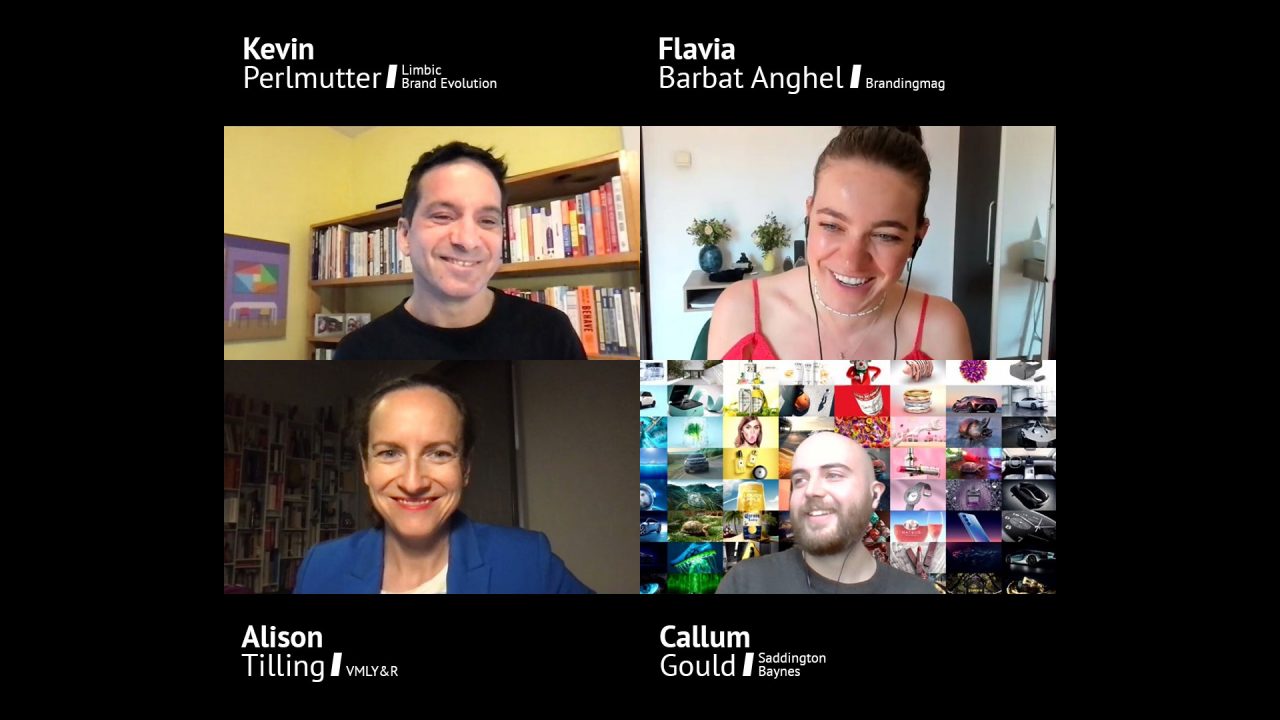
Taking action as a brand – building a campaign that aligns with its overarching strategy and voice, and then executing on it – has always been too long of a process. The mentality of making grand, well-thought-out gestures needs to be not replaced by, but offset by a much stronger focus on micro-actions: those brand behaviors that not only show customers that they’re understood, but also seem serendipitous in their timing. This requires the ability to adapt based on new information, rethinking what it takes to create strong connections, and being open to new avenues of growth.
Brandingmag got together with a blend of experts on emotion, strategy, and data, in a fruitful discussion around the actions of brands. Kevin Perlmutter (chief strategist & founder at Limbic Brand Evolution), Alison Tilling (chief strategy officer at VMLY&R), and Callum Gould (head of insights at Saddington Baynes) talk about the difference between micro-actions and big gestures, how to measure them, why a thoughtful mix of both is needed to drive brand love, and more.
Curious to watch our full discussion? Get your free access to the recording here.

Brandingmag: How are micro-actions different from big gestures? Are consumers more inclined to remember one more than the other?
Kevin Perlmutter: Micro-actions are the ones that feel personal and designed just for the one who experiences them. This may come in the form of a proactive positive experience but, unfortunately, it’s often felt as a poor “corporate” response to a customer service issue – 47% of people will abandon a brand after a poor, frustrating, or impersonal experience. (CMO Council) Empowering employees to “do what’s right for the customer in the moment” can go a long way to drive memorable experiences and future loyalty.
Alison Tilling: How the human brain remembers things is really fascinating. I can’t claim to be a neuroscience expert, but I’d argue that an important difference between big gestures and micro-actions is not whether one is remembered more, but rather what is remembered and why.
Big gestures can really help build mass awareness for a brand, or what you might call ‘mental availability’ – especially when that ‘big gesture’ is an advertising campaign. They can associate a brand with a category and a particular meaning or tone. Micro-actions work differently. They can be more intensely memorable, or a deeper meaning can be attached to them – but usually, for just a few people at a time. It can also be harder to ensure a brand is attached to a micro-action, that it is being ‘owned’ by the brand.
These are all reasons why a combination of the two can be a powerful operating system for brands.
Callum Gould: To me, micro-actions are about brands applying an understanding of their consumers in a way that is directly impacted by the consumers. There is not necessarily a divide between a brand that focuses on macro or micro, it is more about how they are using the consumer data in front of them. Consumers remember an action where it feels like they have been considered in the process, whether this is dynamically optimized content or something personal coming into their inbox.
Bm: What role does emotional response play when it comes to brand actions? Can it be measured in any way?
KP: Emotional response to brand actions and their impact can be measured. We know that emotional response is the largest driver of brand loyalty (Forrester), that strong emotional connection makes a customer 52% more valuable than a customer who is just highly satisfied (HBR), and “emotional data is key to building reliable, meaningful, loyal relationships with customers, that stand the test of time” (Deloitte).
CG: I believe that the role of emotional reactions is extremely important. As a consumer, everything you do is driven by emotional decisions, in some way. Brands who quantify this well are much more likely to succeed as they know what their customers want. There are many ways to measure this effect but what I have been focusing on is understanding how consumers perceive imagery and visual content brands produce. Our suite of tools is no longer limited to just lab-based testing, we can now capture implicit (system 1) responses from people all over the world using technology directed straight to the respondents’ personal devices. This means we are able to limit the post-rationalization that occurs as a result of consumers having time to consider their decisions. As consumers are exposed to about 10,000 ads a day, having that understanding of the emotional impact gives brands a real edge.
Bm: Forrester: “How a brand makes you feel is 1.5x more important than anything else.” Can brands micro- or macro-act their way into what customers feel about them?
KP: That is such an important, and often overlooked statistic. “How do I want people to feel?” is one of the most important questions that brand leaders should be using as a filter in the creation of their brand’s messaging, customer experience, and product offering. Successfully delivering positive and desirable feelings has the most impact on brand loyalty.
AT: Feelings are crucial but can be elusive when it comes to measurement. Most research we tend to rely on, for brand management – tracking, health, and so on – is still important and useful, but if we’re honest, is what people think (or what they want us to believe they think) more so than what they feel. Neuroscience is advancing ways to understand and track feelings, and work in psychology and behavioral science is helping us understand the brain’s systems for feelings. All this is not an end in itself though, it is in the service of creativity, with insights and ‘thick’ data to put our ‘big’ data into perspective. These elements together make for micro- and macro-actions that will have a more visceral effect.
CG: Simply, yes. I think this is especially important at the moment as a vast majority of people are spending most of their time at home. As a brand, you are effectively inviting yourself into someone’s safe space and having the ability to emotionally impact them. People pay attention to brands that deal with this effectively. Make them feel important in their own 4 walls – if you can achieve this you are able to leverage the emotions that people will associate with your brand and, thus, change how they feel. This can be done on both the marco and micro scale.
Bm: Are there any other areas where brands can use small gestures to better connect with their consumers (e.g., clear intent in product design)?
KP: Even big brands can incorporate small, positive, loyalty-driving gestures into people’s everyday experiences. This can include things like a no-hassle product replacement (which I experienced from Bose), a product feature designed to help you live your values (like those designed into Electrolux appliances for people who value sustainable living), or a personalized summary of one’s most listened to music (which Spotify shares at the end of the year).
AT: In customer experience, small gestures can make all the difference to make an experience memorable and link it back to the brand in question. Take IKEA as an example. Having something as simple yet genius as the hot-dog stand after you’ve dragged kids through the showroom and noted down what you need and got lost and lined up to pay – that’s the kind of small gesture that gets remembered. It almost becomes a signature moment.
CG: Brands are always pushing the idea of consistent messaging across their brand communications. I think the ‘missing link’ in all this is the lack of visual consistency. I am naturally biased to say this but I have seen that brands who ensure they have a clear visual identity and understand how that emotionally resonates with their consumers can build more trust which, ultimately, leads to an increased likelihood of purchase decisions. The gesture here is showing you have taken the time to understand, so still keeping it big picture but attaching emotional data to the typical sales/performance-based data.
Bm: What is your main takeaway from the webinar? What did you learn that you did not know before?
KP: My biggest takeaway is that it’s not actually about whether or not a brand is big or small, it’s about attention to detail. People have stronger emotional attachments to brands (and spend more time and money with those brands) that seem to understand and address their needs in a way that feels intentional.
AT: I learned a new perspective on purpose from Kevin, and a new take on measuring (or getting closer to measuring) emotional response from Callum. The really unique part was having those new threads come together within the conversation, which fired up some new ideas for me and gave me a new twist on some challenges I’m wrestling with.
I also learned that it’s hard to talk when there is a mosquito buzzing right by my ear, so I’ll check the room better next time! (laughs)
CG: We know that balancing the vast data streams brands have with those more intimate moments is what will enable brands to bring themselves back to being consumer-focused rather than purely data-focused. Data is just the enabler, you still need to remember there is a story behind that data. As consumer research becomes more accessible and we are going through one of the fastest transition periods ever, brands should act and stay ahead of the curve.
For a more in-depth view on brand actions, get your free access to the recording here.
Cover image source: Maksim Goncharenok